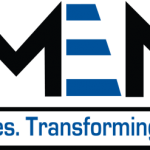
Through modern technology, we have been given countless tools to communicate with one another. Whether we need to coordinate in-depth conversation from remote locations or convey a simple idea in five words, there is a cornucopia of resources to make communication hassle-free. With ever-increasing technological capabilities at our fingertips, it can be easy to get wrapped-up in new gadgets and software; however, we must strive to remember the basic, two-fold purpose behind these tools: to get our message across clearly and to initiate action where needed.
An analyst with AMEND was recently assisting on a client project that required a large action team to be organized in order to reach one elevating goal. The main form of communication that he chose to utilize with this team was e-mail, which as we all know is a widely accepted medium for workplace collaboration. In this analyst’s e-mails, all proper documents were sent out and directions were clearly stated as to what was needed to complete the project; yet, when the time came to execute, he found that none of the team members seemed prepared and that he had to devise a “Plan B” to complete the first stage of this project.
The project was clearly laid out in the e-mail. Why had the plan failed?
Upon further investigation, it was found that few team members had actually read the e-mail. This insight presented the analyst with an important lesson in both consulting and workplace communication: the form of communication used needs to be effective for both the sender and receiver. He realized that e-mail was the method of communication that he was comfortable with, but necessarily what the rest of the team is accustomed to. Communication is a two-way street; it needs to be effective for ALL parties involved.
With this refreshed perspective, he continued with the project, but instead championed face-to-face interaction, rather than solely leveraging e-mail. The team responded with much more enthusiasm, and understood the goals and objectives. The second part of the project was completed by the team with hardly any intervention needed.
Main Takeaway
It is easy to get caught up in what works for you, but the key to effective communication is to find out what works for all parties. Many firms often approach client relationships only thinking about what works for them. At AMEND, we strive to find the best form of communication for facilitating client needs and format ourselves accordingly to increase the velocity of projects. These personalized plans create momentum which leads to further successes (see the Magic of Momentum). In many cases, communication is truly 90% of the work- the remainder is execution.









